ISO 9001:2015 Clause 1– General Introduction and Requirements Explained
Introduction
ISO 9001:2015 is a global standard that helps organizations of all sizes improve the way they manage quality. It focuses on meeting customer needs, following regulations, and ensuring continual improvement. By using tools like the process approach, the PDCA cycle, and risk-based thinking, businesses can work more efficiently, reduce risks, and build stronger customer trust. This blog explains the basics of Clause 1 and why a quality management system is a smart investment for any organization.
Explore how Maxicert can help your organization implement ISO 9001:2015 effectively
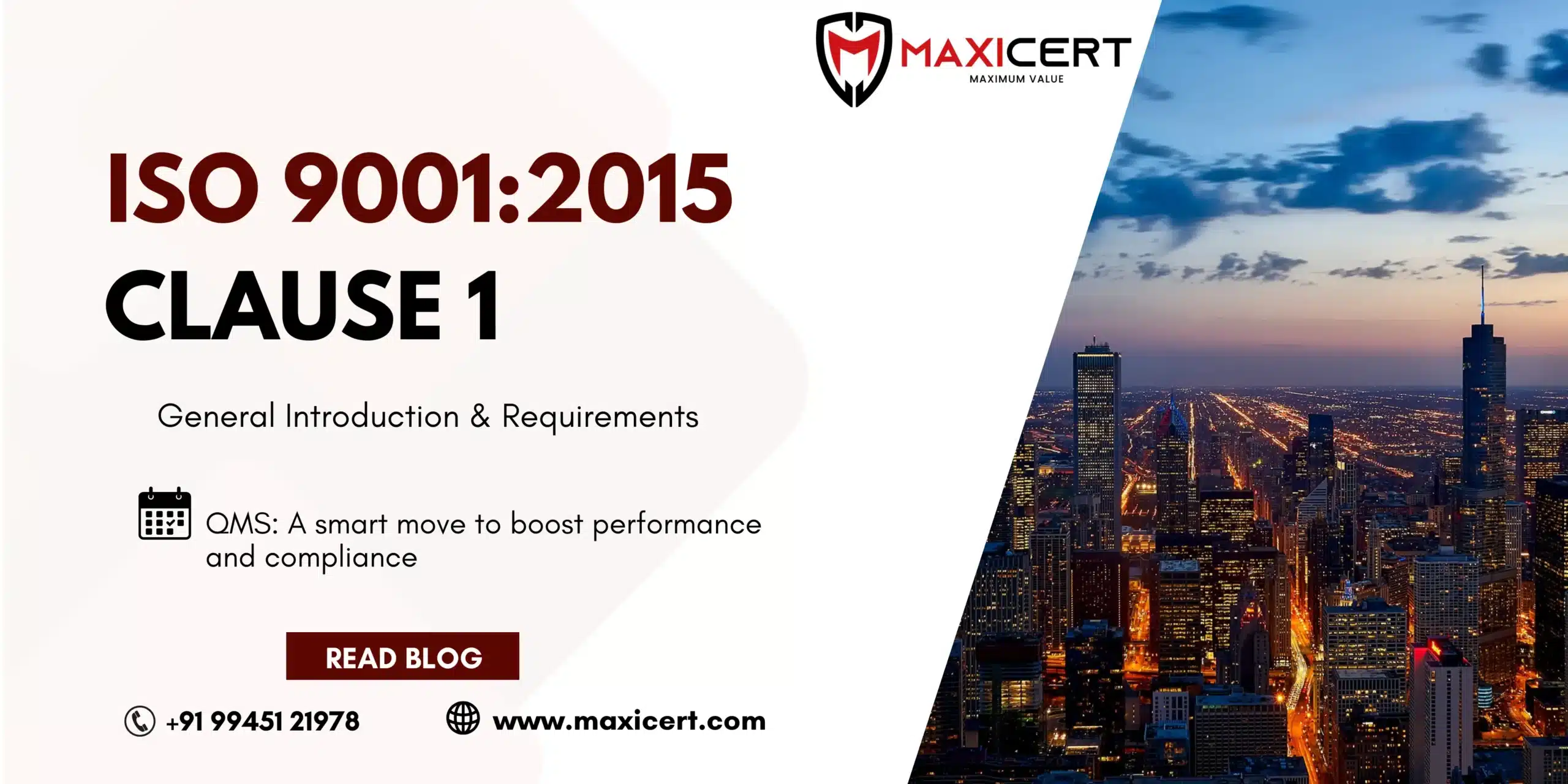
The adoption of a quality management system is a strategic decision for an organization that can help to improve its overall performance and provide a sound basis for sustainable development initiatives.
The potential benefits to an organization of implementing a quality management system based on this International Standard are:
- a) the ability to consistently provide products and services that meet customer and applicable statutory and regulatory requirements;
- b) facilitating opportunities to enhance customer satisfaction;
- c) addressing risks and opportunities associated with its context and objectives;
- d) the ability to demonstrate conformity to specified quality management system requirements.
This International Standard can be used by internal and external parties.
Explication and Commentary (What to look for as an auditor)
All requirements of the ISO 9001:2015 International Standard are generic and are intended to be applicable to all organizations, regardless of type, size and products and services provided.
The use of the term “organization” also includes “businesses” providing services such as law firms and financial institutions, as well as non-profit organizations such as foundations, public hospitals, or municipal administrations.
This document explains how the ISO 9001:2015 quality management system standard applies in different sectors and in the small organization sector.
Most organizations face challenges when developing a quality management system. In a small organization these challenges are potentially greater due to:
- Available resources,
- Minimal costs involved in setting up and maintaining a quality management system, and
- Difficulty in understanding and applying the standard, especially some concepts such as “risk-based thinking.”
A small organization is not only a matter of the number of employees, but also its philosophy. With only a few people involved, communications in a small organization can often be simple and more direct. Individuals are expected to undertake a wide variety of tasks within the organization.
ISO 9001:2015 Clause Guide Panel
- Clause 1
- Clause 2
- Clause 3
- Clause 4 – Sub-clause 1
- Clause 4 – Sub-clause 2
- Clause 5 – Sub-clause 1
- Clause 5 – Sub-clause 2
- Clause 5 – Sub-clause 3
- Clause 6 – Sub-clause 1
- Clause 6 – Sub-clause 2
- Clause 7 – Sub-clause 1
- Clause 7 – Sub-clause 2
- Clause 7 – Sub-clause 3
- Clause 7 – Sub-clause 4
- Clause 8 – Sub-clause 1
- Clause 8 – Sub-clause 2
- Clause 8 – Sub-clause 3
- Clause 8 – Sub-clause 4
- Clause 8 – Sub-clause 5
- Clause 8 – Sub-clause 6
- Clause 8 – Sub-clause 7
- Clause 8 – Sub-clause 8
- Clause 8 – Sub-clause 9
- Clause 8 – Sub-clause 10
- Clause 8 – Sub-clause 11
- Clause 8 – Sub-clause 12
- Clause 9 – Sub-clause 1
- Clause 9 – Sub-clause 2
- Clause 9 – Sub-clause 3
- Clause 9 – Sub-clause 4
- Clause 10
Decision-making is confined to a few people (or even one). Much of the advice given will also be relevant to larger organizations, which are often good at adapting techniques and improvements developed successfully elsewhere. However, caution should be exercised, since the features on which the advice is based may not always be appropriate in larger organizations.
For the organization’s manager, the time and money spent implementing a quality management system should be looked at in the same way as any other investment to make. For it to be viable, the manager has to be able to achieve a return for the time and effort, through improvements in the organization’s processes and marketability of the products and services. The decisions at the early stages of introducing/developing the quality management system will have a major influence in these areas.
Any organization that wishes to develop its quality management system beyond the ISO 9001:2015 requirements and, in addition to its customers, other interested parties, should consider using ISO 9004 Managing for the sustained success of an organization — A quality management approach. However, ISO 9004 is not intended for certification or contractual purposes.
Clarifications in ISO 9001:2015
It is not the intent of this International Standard to imply the need for:
- uniformity in the structure of different quality management systems,
- alignment of documentation to the clause structure of this International Standard,
- the use of the specific terminology of this International Standard within the organization.
The quality management system requirements specified in this International Standard are complementary to requirements for products and services.
This International Standard employs the process approach, which incorporates the Plan-Do-Check-Act (PDCA) cycle and risk-based thinking. The process approach enables an organization to plan its processes and their interactions.
The PDCA cycle enables an organization to ensure that its processes are adequately resourced and managed, and that opportunities for improvement are determined and acted on.
Risk-based thinking enables an organization to determine the factors that could cause its processes and its quality management system to deviate from the planned results, to put in place preventive controls to minimize negative effects, and to make maximum use of opportunities as they arise.
Consistently meeting requirements and addressing future needs and expectations poses a challenge for organizations in an increasingly dynamic and complex environment. To achieve this objective, the organization might find it necessary to adopt various forms of improvement in addition to correction and continual improvement, such as breakthrough change, innovation, and re-organization.
Use of Verbal Forms in ISO 9001:2015
Information marked as “NOTE” is for guidance in understanding or clarifying the associated requirement.
Explanation of Key Terms
Key Terms in ISO 9001 and Their Meaning
Conclusion
ISO 9001:2015 is more than just a compliance requirement—it is a framework that helps organizations improve efficiency, strengthen customer trust, and adapt to an ever-changing business environment. By applying the process approach, PDCA cycle, and risk-based thinking, companies of all sizes can achieve consistent results, reduce risks, and identify opportunities for growth.
Whether you are a small business facing resource challenges or a large enterprise looking to refine processes, ISO 9001:2015 provides the foundation for building a culture of quality and continual improvement. Implementing this standard is not just an investment in certification, but a long-term commitment to excellence, sustainability, and customer satisfaction.
Next, explore ISO 9001:2015 Clause 0.2 – Quality Management Principles Explained
Free 60–90 day implementation plan available after consultation.
Client Testimonials
What Our Clients Say About Us?
We are trusted by thousands of clients belonging from technology, manufacturing, healthcare and various sectors
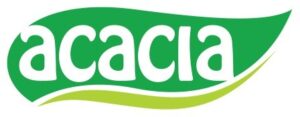

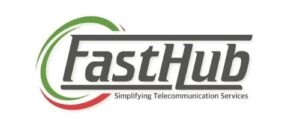

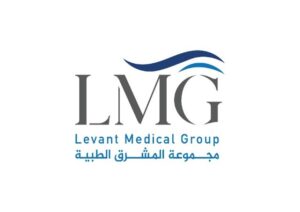


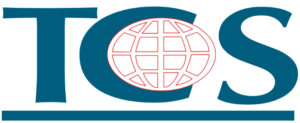
Our overall experience with Maxicert was satisfied. The audit and consulting part was handled carefully, we fulfilled our client requirement of ISO 27001 hassle free.
Kevin Santiago BDM – Clarks Outsourcing, PhilippinesTimely response and knowledge of ISO standards can be seen together in the team of Maxicert, we grow because of the service providers like Maxicert.
Samuel Christopher Quality Assurance Head – OEQA, NigeriaWe did Food safety certification with Maxicert, the service was extraordinary and their consultant had good experience of the subject.
Mr. Venkatesh Production Manager - Acacia Foods and Beverages, ZambiaWe engaged a consultant of Maxicert for our business certification, we now have a well-designed and organized department procedures and we rectify our errors through internal audits regularly.
Abdullah Al Rayes Managing Director – TCS, BahrainTechnical expertise by the team of Maxicert helped us achieving our ISO 13485 certificates, we now proudly say that we have achieved our target, all thanks to the team.
Nady Boustany CEO – LMG, IraqMaxiCert's approach to meet our needs proved instrumental in facilitating a seamless transition throughout the entire ISO certification process for us. Their training sessions are so much helpful.
Ms. Latifa Al Salem Investor portfolio – Ministry of Investment, Saudi ArabiaMaxicert is a one stop solution, we got trainings, documents, audit and certification at one place, they facilitated everything.
Ms. Mariam Chaggama VP – Fasthub, Tanzania



Their presence in Oman made us even better to accomplish our goal of achieving ISO certificates on time, we will definitely recommend their services.
Mr. Sailesh Mohanakrishnan Division Manager – Khimji Ramdas, Oman